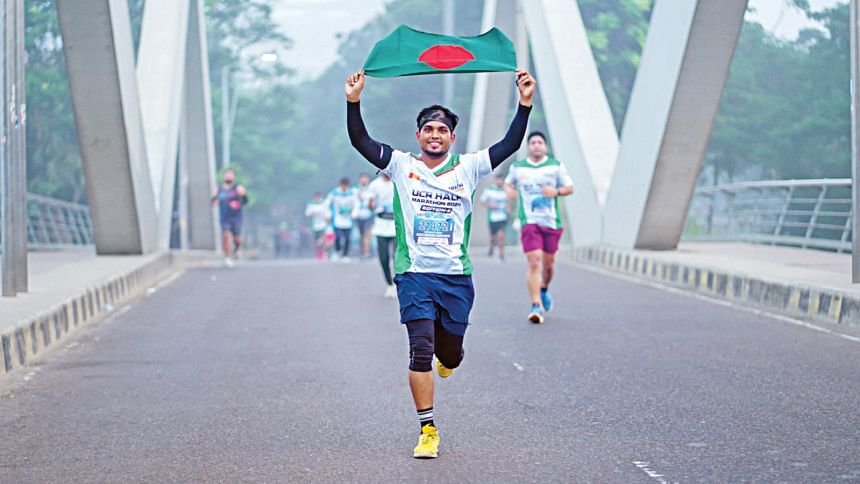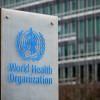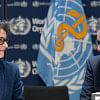World Physical Activity Day: Be active for health and well-being

April 6th marks World Physical Activity Day. The World Health Organization (WHO) designated this day in 2002 to promote physical activity and its role in maintaining a healthy lifestyle. While celebrated worldwide, the significance of this day is especially crucial in countries like Bangladesh, where sedentary lifestyles present major health and societal challenges.
What is meant by physical activity?
Physical activity encompasses any bodily movement produced by skeletal muscles that requires energy expenditure. This broad definition includes activities performed during leisure time, transportation (walking or cycling), occupational tasks, and household chores. Physical activity can be categorised into low, moderate, and vigorous intensity. Moderate-intensity activities, such as brisk walking or cycling, increase heart rate by 50 to 70 percent, while vigorous-intensity activities, such as jogging or playing soccer, raise heart rate by 70 to 85 percent. When physical activity is performed at a vigorous level, breathing becomes deep and rapid, sweat develops after only a few minutes, and speaking more than a few words without pausing for breath is impossible.
Exercise and sports are specific forms of physical activity. Exercise is a more deliberate and repetitive activity designed to enhance physical fitness. Examples include jogging, yoga, lifting weights, and aerobics routines. Exercise is often planned and structured to target specific fitness goals, such as endurance, strength, or flexibility. Sports are a specialised form of physical activity that involves set rules, competition, and skill development.
Why is physical activity important?
According to WHO, physical activity has profound benefits for physical, mental, and social health. Regular physical activity helps prevent and manage non-communicable diseases (NCDs) such as heart disease, stroke, diabetes, and certain types of cancer. It also improves mental health by reducing symptoms of depression and anxiety, enhancing cognitive function, and promoting better sleep. Additionally, physical activity plays a critical role in ensuring healthy growth and development in children and adolescents.
Beyond individual health benefits, physical activity contributes to broader societal goals. For instance, increased physical activity (walking, cycling) can reduce reliance on fossil fuels, leading to cleaner air and safer roads. Such outcomes align with the United Nations' Sustainable Development Goals (SDGs), particularly those related to health, sustainable cities, and climate action. Despite these well-documented benefits, global levels of physical activity remain insufficient. WHO estimates that one in four adults (27 percent) worldwide does not meet recommended levels of physical activity, and more than 80 percent of adolescents are insufficiently active.
Physical activity according to ages
Physical activity recommendations vary by age group. For children and adolescents (5-17 years), it is recommended to engage in at least 60 minutes of moderate-to-vigorous physical activity daily, including aerobic exercises and activities that strengthen muscles and bones, at least three times a week. Adults (18-64 years) should aim for at least 150 minutes of moderate-intensity aerobic activity or 75 minutes of vigorous-intensity activity per week, combined with muscle-strengthening activities two or more days a week. For older adults (65+ years), the same guidelines apply but with an added focus on balance and strength exercises to prevent falls. For individuals with chronic conditions or disabilities, physical activity should be tailored to personal abilities, with a goal of 150 minutes of moderate-intensity aerobic activity weekly, in addition to muscle-strengthening exercises. It is a good idea to consult your physician or any qualified professions (e.g., physiotherapist, exercise physiologist) before making any significant changes to your physical activity routine, especially if you have any underlying health conditions or concerns.
What is the current scenario of physical activity in Bangladesh?
Like many other countries in the Global South, Bangladesh faces significant challenges in promoting physical activity among its population. According to the 2022 National STEPS Survey for NCD risk factors, 19.5 percent of Bangladeshi adults are not sufficiently active, with women being less active than men (14.6 percent vs 23.9 percent). The WHO's Bangladesh Physical Activity Profile 2022 further highlights disparities: 16 percent of adult men and 40 percent of adult women are insufficiently active.
Additionally, a recent population-based study found that 50.3 percent of adolescent girls and 29 percent of boys were insufficiently active in Bangladesh. These statistics reflect a pressing need for targeted interventions to promote physical activity across all age groups in Bangladesh.
How can Bangladesh promote physical activity?
Addressing the challenges requires a multi-faceted approach involving government policies, community initiatives, NGO efforts and individual endeavours. One of the most critical strategies is the development of national policies that prioritise physical activity as a public health goal. These policies should outline clear objectives, action plans, and monitoring frameworks to ensure effective implementation. Alongside policy development, investing in infrastructure such as parks, playgrounds, pedestrian pathways, and cycling lanes is essential. Such infrastructure should be equitably distributed across urban and rural areas. Public spaces must also be designed inclusively with proper arrangements to make them accessible to women, children, and people with disabilities.
Raising awareness about the benefits of physical activity is another key intervention. Nationwide campaigns using television, radio, social media, and community events can effectively reach diverse audiences, spreading the message about the importance of staying active. Educational efforts should begin early, with physical activity incorporated into school curricula and emphasised as a vital component of health and well-being. Schools can promote active lifestyles by encouraging daily physical education classes, active breaks, and extracurricular sports programs.
Community engagement can significantly enhance participation in physical activity. Organising community-based programmes such as walking groups, sports tournaments, fitness classes, and yoga sessions not only promotes physical activity but also fosters social connections and collective motivation. Local religious and political leaders, sports influencers, and community organisations can serve as advocates for physical activity, mobilising resources and fostering community involvement. Establishing local hubs or clubs that offer structured opportunities for activities like yoga, martial arts, or group sports can further encourage active lifestyles.
Addressing gender disparities is crucial in promoting physical activity. Cultural and societal barriers often limit women's participation in exercise and sports, particularly in conservative communities. Solutions include creating women-only fitness centres, gyms, sports programs, and safe spaces for exercise. Highlighting role models and success stories of women's sports can inspire others, while community dialogues and educational programs can challenge gender stereotypes and advocate for equitable participation.
Technology can offer promising opportunities to encourage physical activity. Mobile apps, wearable devices, and online platforms can provide personalized workout plans, reminders, and motivational content, keeping users engaged in their fitness journeys. Culturally appropriate digital tools tailored to the Bangladeshi context can guide individuals on affordable and accessible ways to stay active. Virtual fitness classes and webinars can extend resources to remote or underserved communities, ensuring everyone has access to fitness opportunities.
Surveillance is crucial in promoting physical activity as it helps track trends by systematically collecting and analysing data on physical activity levels across different populations. This process provides valuable insights into patterns of exercise, identifying areas where inactivity is most prevalent and highlighting groups at higher risk of sedentary behaviour. By monitoring these trends over time, policymakers and health officials can assess the effectiveness of current programs, determine emerging challenges, and adjust strategies to promote physical activity.
Moving forward
The World Physical Activity Day for serves as a reminder of the critical role that physical activity plays in improving individual and societal health. By addressing barriers such as urbanisation, gender norms, and lack of awareness, we can create an environment that supports and encourages physical activity to improve public health outcomes and broader social and economic development goals. With concerted efforts from policymakers, educators, community leaders, and individuals, it is possible to make physical activity an integral part of daily life in Bangladesh. As we celebrate the World Day for Physical Activity, let us pledge to move more, sit less, and embrace the joy of being active. By working together, we can create a healthier, happier, and more active nation.
Dr Asaduzzaman Khan is associate professor at the School of Health and Rehabilitation Sciences of the University of Queensland, Australia. He is also the chair of Active Healthy Kids Bangladesh.
Views expressed in this article are the auhtor's own.
Follow The Daily Star Opinion on Facebook for the latest opinions, commentaries and analyses by experts and professionals. To contribute your article or letter to The Daily Star Opinion, see our guidelines for submission.

 For all latest news, follow The Daily Star's Google News channel.
For all latest news, follow The Daily Star's Google News channel. 









Comments